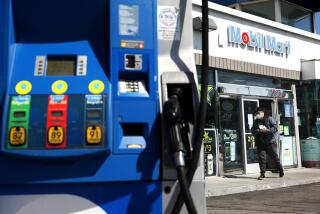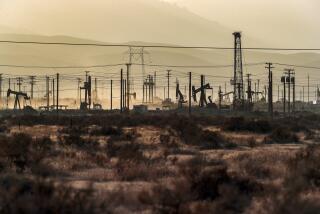Fracking: How risky for us?
California is believed to have more than 15 billion barrels of oil locked within the rocks under the Central Valley that might be used to feed the nation’s energy hunger — if oil companies can free it with hydraulic fracturing. Fracking, as the practice is popularly called, has been going on in the state for years, but mostly in a remote oil field in Kern County. The prospect of extensive new fracking efforts in the 1,750-square-mile geological formation known as the Monterey Shale, which extends roughly from Modesto to Bakersfield, calls for long-overdue study and regulation of how this production method might affect air and water quality, as well as seismic safety.
The process involves injecting fluids, usually large amounts of water mixed with sand and/or chemicals, at high pressure to fracture the rock and release the fuel. According to a March report by USC, fracking of the Monterey Shale could create hundreds of thousands of jobs, at least temporarily, and boost tax revenues to the state by billions of dollars. But at what cost?
In a state as environmentally aware as California, it’s alarming how little state government has done to learn about or oversee the practice. Two years ago, the state’s Division of Oil, Gas and Geothermal Resources admitted in a letter that it was “unable to identify” where and how often hydraulic fracturing occurs, how much fresh water is being used for it — though it estimated about 70,000 barrels per well — whether it is being carried out safely or what chemicals are being used.
There have been ongoing concerns in other parts of the country that fracking might taint groundwater and pollute the air. California has two additional worries: how much of the state’s scarce water supplies can be spared for fracking, and the potential for earthquakes. The fracturing itself is believed to create little if any seismic danger, but the disposal of the wastewater by injecting it into other wells has been fingered in scientific journals and by the U.S. government as the probable source of earthquakes in areas such as Oklahoma that aren’t quake-prone.
In the absence of meaningful fracking regulations from the Brown administration, close to a dozen pieces of legislation were introduced. At least one bill, by Sen. Fran Pavley (D-Agoura Hills), would impose significant public disclosure requirements on fracking operations, including lists of the chemicals used. More important, the bill would require permits for new wells, which would fall under the California Environmental Quality Act. That means environmental impact reports would be required, and opponents could sue if they believe that a report was inadequate and that a well would cause environmental harm, including earthquakes.
Pavley’s bill, SB 4, also would require the state to study the possible hazards associated with fracking; if the report isn’t delivered by the January 2015 deadline, new wells would be banned until it is completed. The deadline would nearly coincide with the expected release of an extensive Environmental Protection Agency study examining whether fracking affects drinking water quality.
As much as SB 4 would address many key issues about fracking, stronger measures are needed upfront. At this point, too little is known to ensure public safety. A federal judge ruled as much in April when he found that the U.S. Bureau of Land Management had improperly failed to carry out the required intensive environmental study before leasing 2,700 acres of federal land in the Monterey Shale for fracking. A bill by Assemblywoman Holly Mitchell (D-Los Angeles) would impose a moratorium pending the outcome of a state study, while Pavley’s would allow fracking to continue until a study is completed. Mitchell’s strikes us as the more prudent course. Ideally, these bills would be paired so that once the state has established parameters for safe fracking — assuming they exist — important requirements would be in place.
It’s worth waiting a year or so for better information before allowing significant increases in fracking. The oil will still be there, as will the demand for it. For the long term, it’s worth noting that although the Monterey Shale is believed to be by far the nation’s largest source of recoverable oil, all 15 billion barrels would fulfill the nation’s energy needs for only three years.
More to Read
A cure for the common opinion
Get thought-provoking perspectives with our weekly newsletter.
You may occasionally receive promotional content from the Los Angeles Times.






